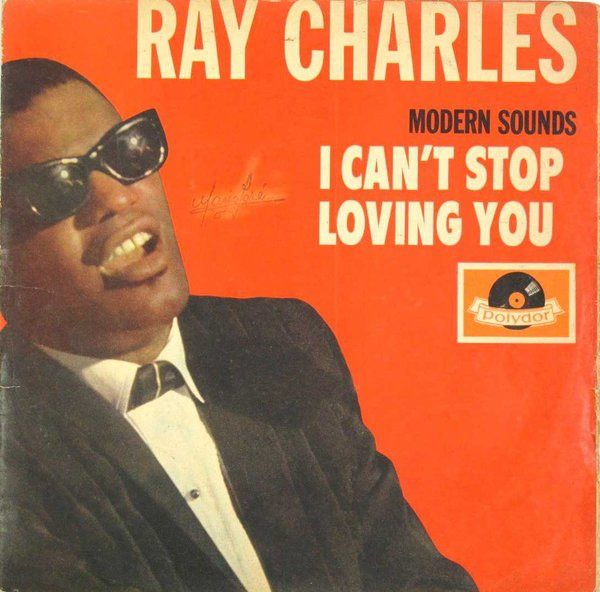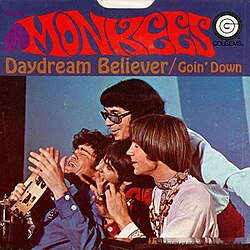 “Green Onions” by Booker T. & the M.G.’s is one of the most iconic and influential instrumental tracks in the history of popular music. Released in 1962, this smoky, soulful groove encapsulated the spirit of early 1960s rhythm and blues while helping to lay the foundation for what would become the Memphis soul sound. Its unmistakable organ riff, tight rhythm section, and laid-back but infectious vibe captured the imagination of listeners around the world and remains a timeless classic more than half a century later. The song’s enduring legacy can be measured not only by its commercial success but also by its massive influence on countless artists across multiple genres, from rock to funk to hip-hop.
“Green Onions” by Booker T. & the M.G.’s is one of the most iconic and influential instrumental tracks in the history of popular music. Released in 1962, this smoky, soulful groove encapsulated the spirit of early 1960s rhythm and blues while helping to lay the foundation for what would become the Memphis soul sound. Its unmistakable organ riff, tight rhythm section, and laid-back but infectious vibe captured the imagination of listeners around the world and remains a timeless classic more than half a century later. The song’s enduring legacy can be measured not only by its commercial success but also by its massive influence on countless artists across multiple genres, from rock to funk to hip-hop.
Booker T. & the M.G.’s were the house band for Stax Records, based in Memphis, Tennessee, and they played a critical role in shaping the sound of soul music during the 1960s. The band consisted of Booker T. Jones on Hammond organ, Steve Cropper on guitar, Lewie Steinberg on bass (later replaced by Donald “Duck” Dunn), and Al Jackson Jr. on drums. Each member was a consummate musician, and their chemistry was evident in every note of “Green Onions.”
The origins of “Green Onions” are a classic story of creative spontaneity. The track was reportedly created during a studio session when the band was warming up or noodling around. Producer Jim Stewart suggested recording what they were playing, which resulted in the loose but focused groove that became the track’s backbone. The organic, unpretentious nature of its creation helped preserve the raw energy and authenticity that make the song so compelling.
Musically, “Green Onions” is built around a simple yet irresistibly catchy four-note riff played by Booker T. Jones on the Hammond B-3 organ. The riff has a bluesy quality, with a hint of minor pentatonic scale licks, creating a mood that is simultaneously mysterious, cool, and soulful. This riff repeats throughout the song, providing a hypnotic foundation that is both minimalist and deeply expressive.
The rhythm section—Steve Cropper’s sharp, understated guitar, Lewie Steinberg’s steady bass, and Al Jackson Jr.’s crisp drumming—provides a tight, swinging groove that perfectly complements the organ’s melody. The drummer’s use of the snare and hi-hat accents creates a sense of propulsion without overpowering the subtlety of the arrangement. The interplay between the musicians showcases their deep listening skills and mutual understanding, resulting in a performance that feels both rehearsed and spontaneous.
The track is a masterclass in economy of musical expression. With no vocals and relatively few notes, “Green Onions” evokes a wide emotional range. It feels cool and relaxed, yet there is an undercurrent of intensity and urgency. This balance between restraint and energy is a hallmark of the Memphis soul sound and a key reason why the track resonates so deeply with listeners.
“Green Onions” was released as a single on Stax Records in 1962 and became an unexpected hit. It reached number three on the Billboard R&B charts and number seven on the Billboard Hot 100, an impressive crossover success for an instrumental track at that time. Its popularity helped establish Booker T. & the M.G.’s as one of the premier instrumental groups and solidified Stax Records’ reputation as a major force in American music.
The song’s success was remarkable given the dominance of vocal groups and singers in the early 1960s. “Green Onions” demonstrated that instrumental music could captivate audiences and hold its own on the charts. This paved the way for other instrumental hits and broadened the scope of popular music.
Beyond its commercial performance, “Green Onions” had a profound impact on the development of soul, R&B, and rock music. Its gritty, organ-driven sound became a defining element of the Memphis style, influencing countless musicians and producers. The song’s groove and feel inspired later soul artists, funk pioneers, and even British rock bands who sought to capture some of its raw energy.
Steve Cropper’s guitar work on “Green Onions” is particularly noteworthy. His playing is clean, melodic, and highly rhythmic, providing subtle fills and accents that enrich the texture without dominating the mix. Cropper’s approach became a blueprint for countless rhythm guitarists in soul and rock music, blending precision with soulfulness.
Booker T. Jones’s organ playing is the song’s centerpiece. His mastery of the Hammond B-3 organ, with its rich tone and ability to sustain notes, creates the track’s distinctive sound. The organ’s tone on “Green Onions” is both warm and edgy, capable of conveying a wide emotional palette. Jones’s phrasing and timing give the melody a conversational quality, as if the instrument itself is telling a story.
Al Jackson Jr.’s drumming deserves special mention for its understated power and impeccable timing. His crisp snare hits, nuanced hi-hat work, and steady groove hold the track together with subtlety and flair. Jackson’s drumming style influenced generations of drummers, particularly in soul and funk genres.
The bass line, originally played by Lewie Steinberg and later often performed by Donald “Duck” Dunn, provides a solid foundation with a smooth, pulsing rhythm. The bass anchors the groove and adds depth without overwhelming the other instruments. The tightness between the bass and drums in “Green Onions” exemplifies the “pocket” feel that is essential to great rhythm sections.
The production of “Green Onions” is relatively straightforward but highly effective. Recorded at Stax’s modest studio in Memphis, the track’s sound captures the warmth and immediacy of a live performance. The mix allows each instrument to breathe, highlighting the interplay and dynamics between the musicians. This approach contrasts with the heavily layered and processed production styles that would become common in later decades.
“Green Onions” also gained popularity in the burgeoning youth and surf cultures of the 1960s. Its cool, instrumental vibe made it a favorite among teenagers and young adults, and it found its way into jukeboxes, dance halls, and radio playlists. The track’s driving beat and memorable riff made it suitable for dancing and casual listening alike.
The song’s influence extended internationally. British Invasion bands like The Rolling Stones and The Beatles admired the Stax sound and the musicianship of Booker T. & the M.G.’s. The track’s organ riff and groove style were echoed in numerous rock and pop songs that followed.
“Green Onions” has been featured extensively in film, television, and advertising, further cementing its place in popular culture. Its instantly recognizable riff has become synonymous with coolness and retro style, often used to evoke the early 1960s atmosphere or to underscore scenes with a funky, laid-back mood.
The track’s legacy also includes numerous covers and reinterpretations by a wide range of artists. From jazz musicians to rock bands to hip-hop producers, many have drawn inspiration from “Green Onions,” adapting its core elements to new contexts and audiences. The song’s adaptability and timeless groove contribute to its continued relevance.
Booker T. & the M.G.’s themselves went on to record a series of successful albums and became one of the most respected instrumental groups in music history. Their work as a house band at Stax Records meant they backed numerous legendary artists such as Otis Redding, Sam & Dave, and Wilson Pickett, contributing to some of the greatest soul recordings ever made.
“Green Onions” is often seen as a perfect snapshot of the Memphis soul sound—raw, emotional, and deeply rhythmic. It embodies the city’s musical traditions while pushing forward into new territory. The song’s simplicity belies its complexity; its minimalistic approach allows each element to shine and creates a groove that is both easy to listen to and deeply engaging.
The cultural impact of “Green Onions” goes beyond music. It represents a moment in American history when soul and R&B were asserting their power and influence on the mainstream. The track’s crossover success helped break down racial and musical barriers, bringing the sounds of Black Memphis musicians to a broader, diverse audience.
The instrumental nature of “Green Onions” also speaks to the universal language of music. Without words, the song conveys mood, attitude, and narrative through melody and rhythm alone. This universality is part of what has allowed “Green Onions” to endure and resonate with listeners of all backgrounds and generations.
Live performances of “Green Onions” by Booker T. & the M.G.’s were highlights of their concerts, showcasing their tight musicianship and the song’s infectious groove. The band’s ability to recreate the track’s energy on stage solidified their reputation as outstanding live performers.
The song’s minimalistic but effective use of repetition is a hallmark of the early 1960s R&B style. The repeated riff builds tension and anticipation, creating a hypnotic effect that keeps listeners engaged. This approach influenced later genres such as funk and hip-hop, where grooves and loops form the backbone of musical expression.
“Green Onions” also highlights the importance of instrumental tracks during the early days of rock and soul. At a time when vocal groups dominated, the song proved that an instrumental could captivate audiences, tell a story, and become a cultural phenomenon. This opened doors for other instrumental hits and helped diversify the musical landscape.
The track’s production and performance quality are still studied and admired by musicians and producers. Its clean mix, tight playing, and warm tones serve as a masterclass in how to create an effective instrumental groove.
The song’s title, “Green Onions,” adds a layer of charm and intrigue. It evokes something fresh, organic, and a little bit spicy—much like the track itself. The playful title complements the music’s earthy, soulful vibe and contributes to its memorability.
Booker T. & the M.G.’s crafted a sound that was both accessible and sophisticated. “Green Onions” exemplifies their skill in balancing catchy hooks with subtle musicianship, creating music that appeals to casual listeners and connoisseurs alike.
The song’s place in music history is firmly established. It is often included in lists of the greatest instrumental tracks and has been inducted into various halls of fame. Its legacy continues to influence contemporary music, reminding artists and fans of the power of groove and melody.
In conclusion, “Green Onions” by Booker T. & the M.G.’s is a seminal instrumental track that defined a generation and shaped the course of soul and R&B music. Its iconic organ riff, tight rhythm section, and cool, laid-back groove combine to create a timeless classic. The song’s influence spans decades and genres, testifying to its enduring appeal and musical brilliance. More than just a track, “Green Onions” is a cultural artifact, capturing the spirit of early 1960s Memphis and the soul music movement that changed the world.


